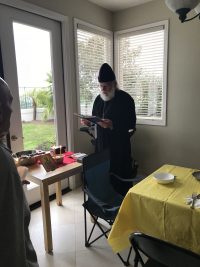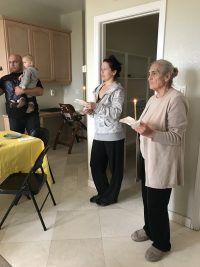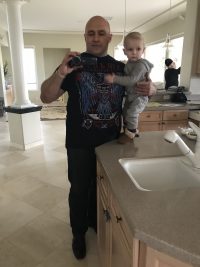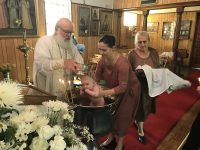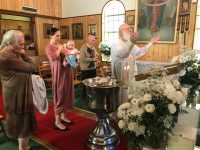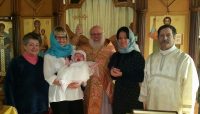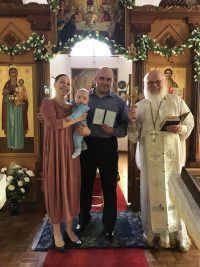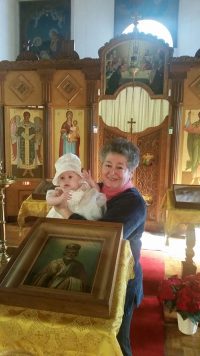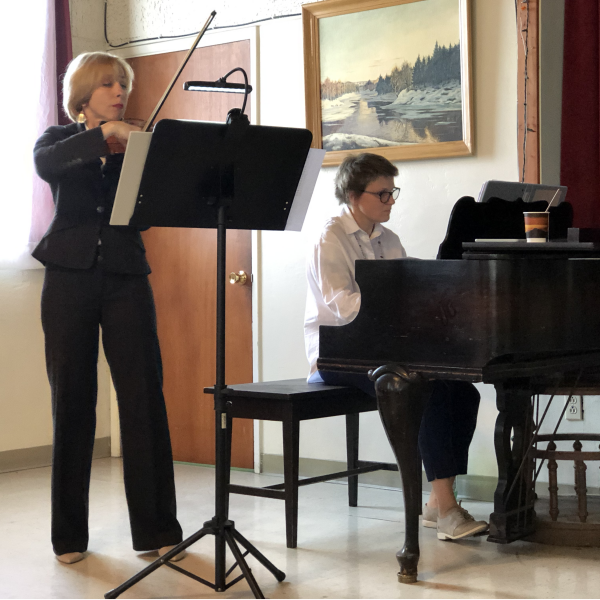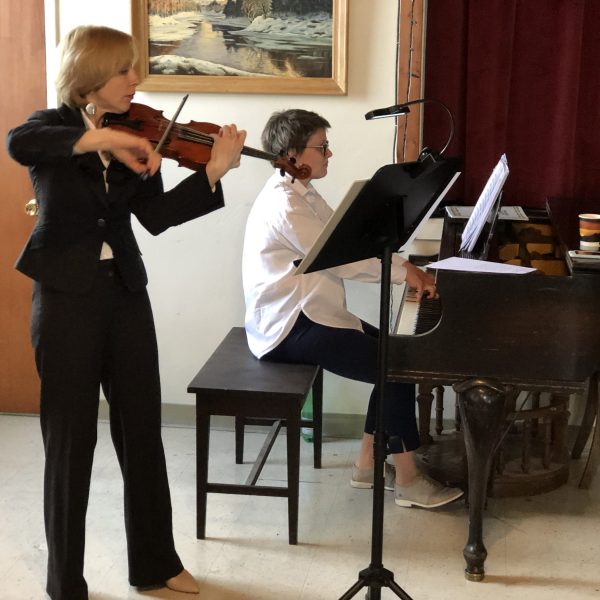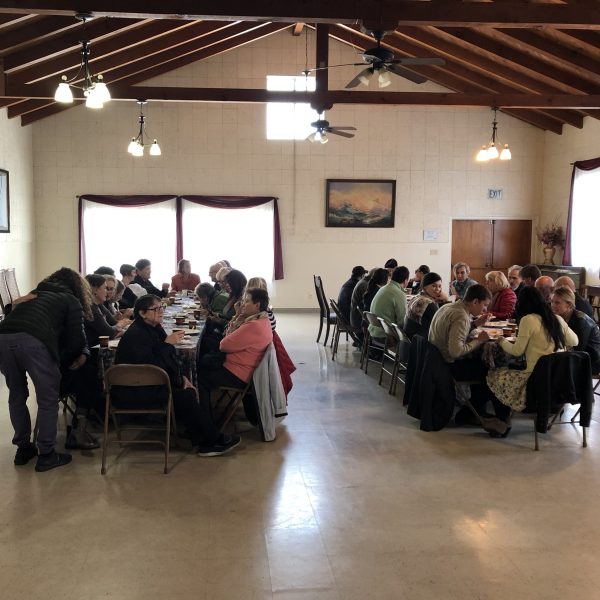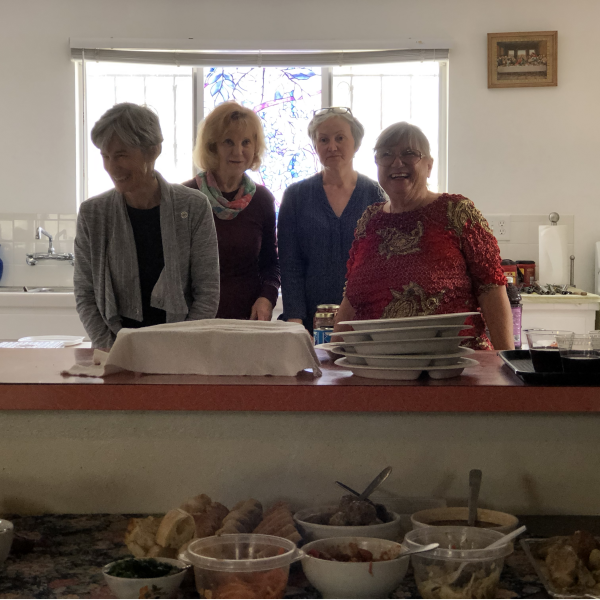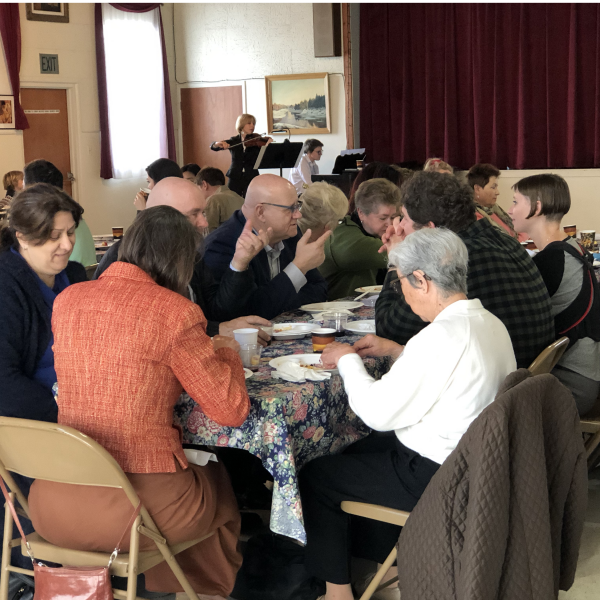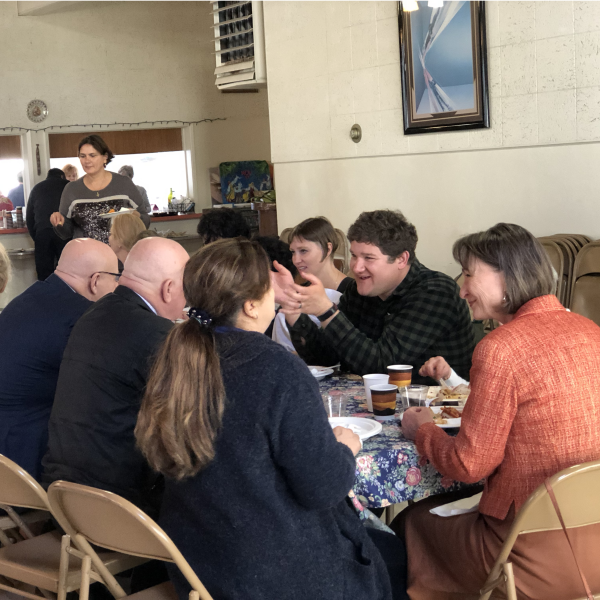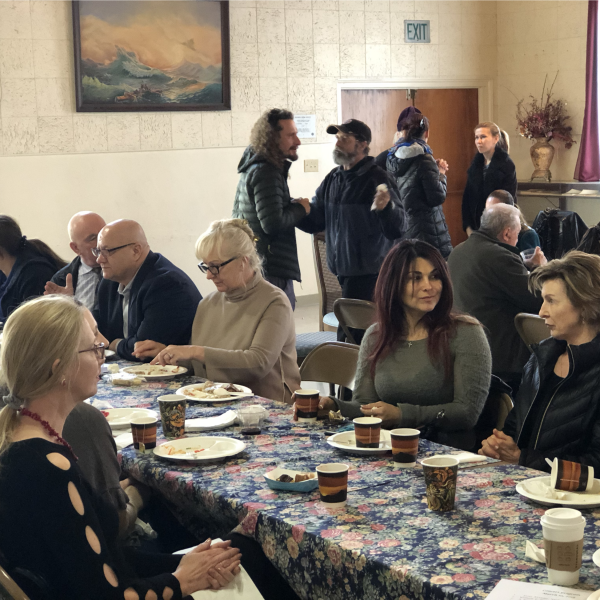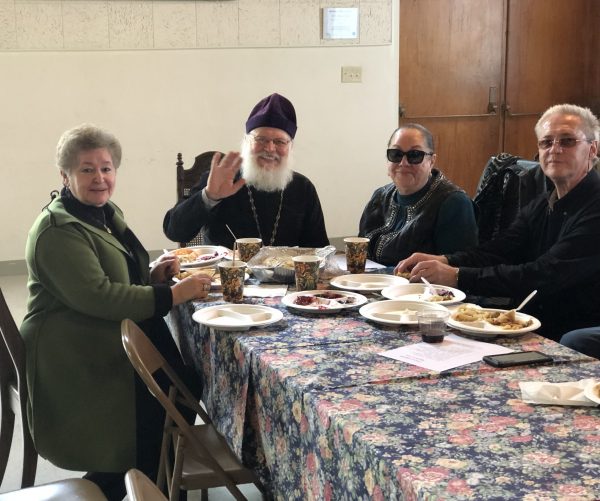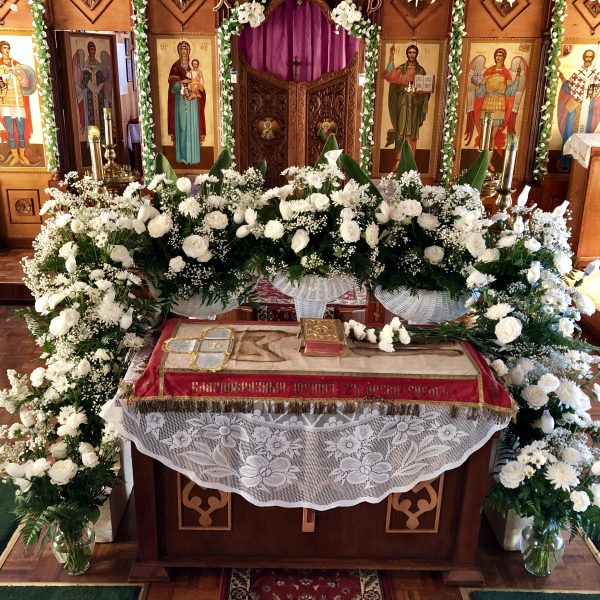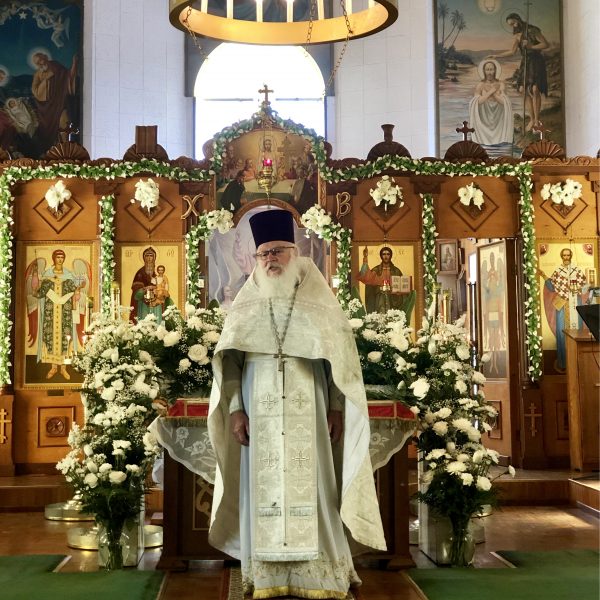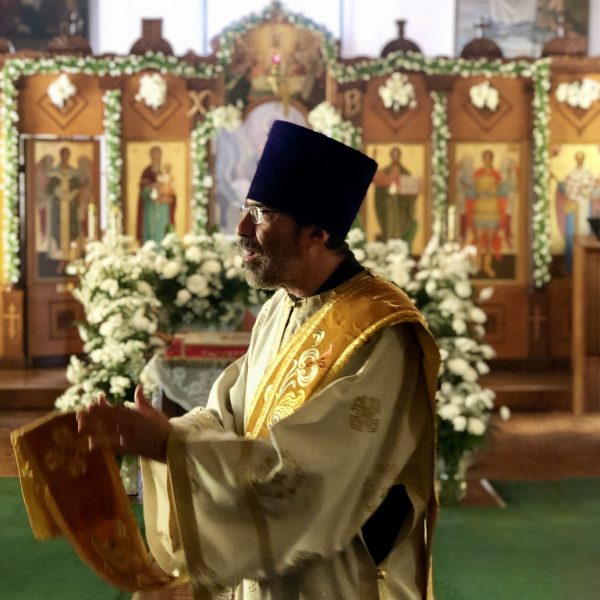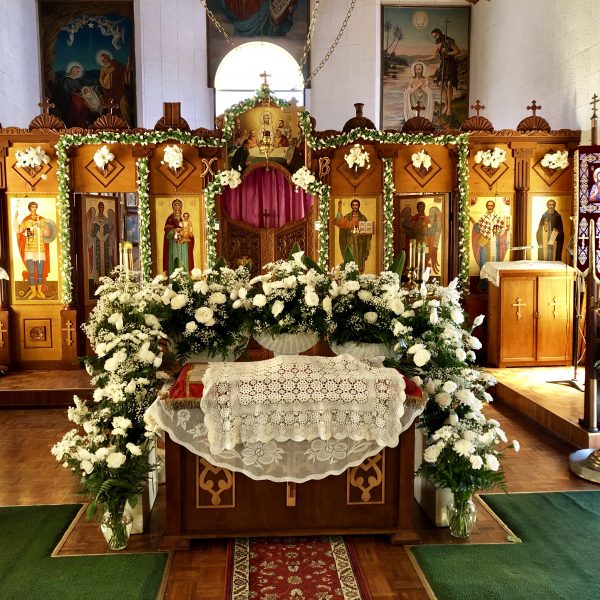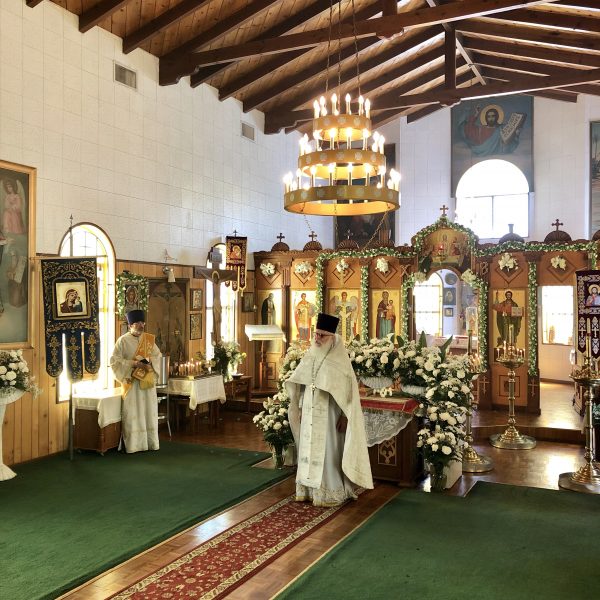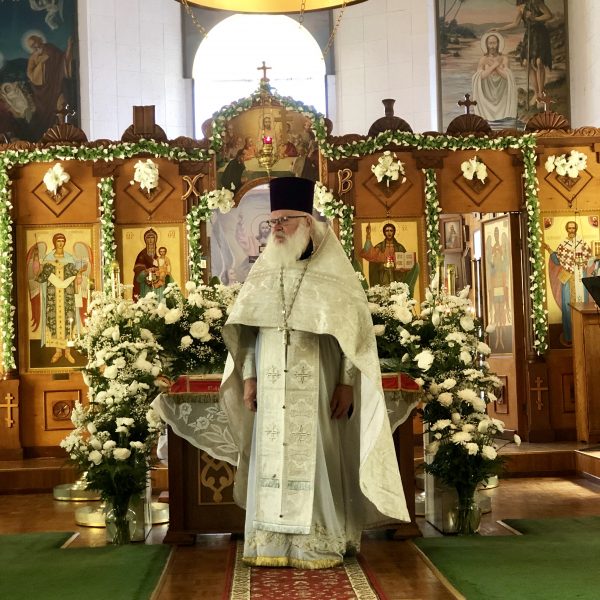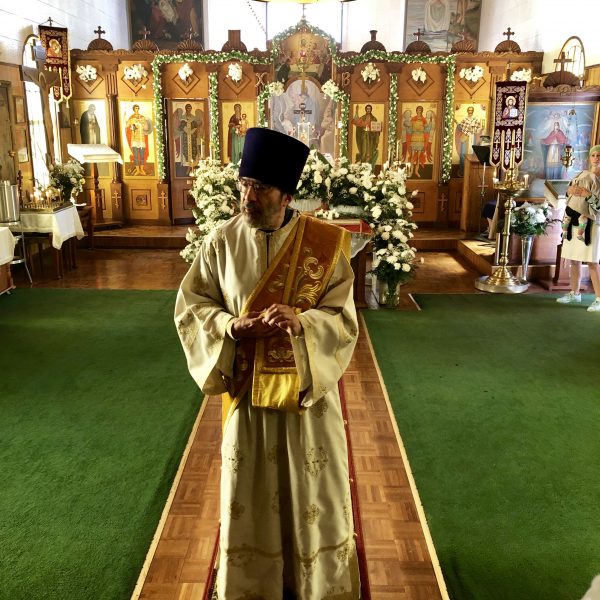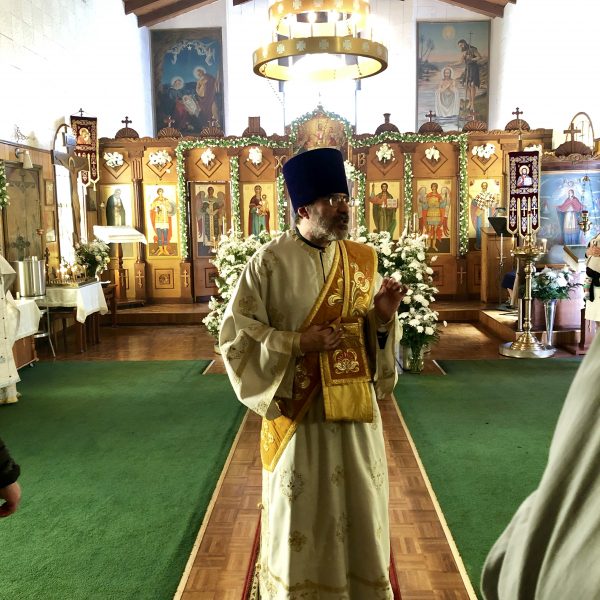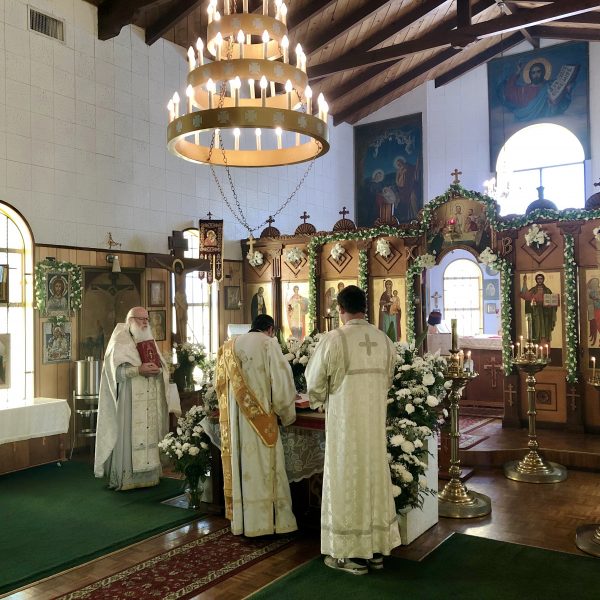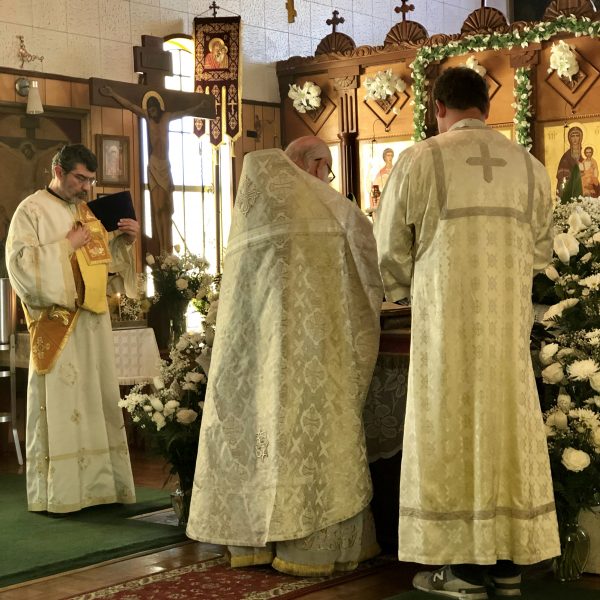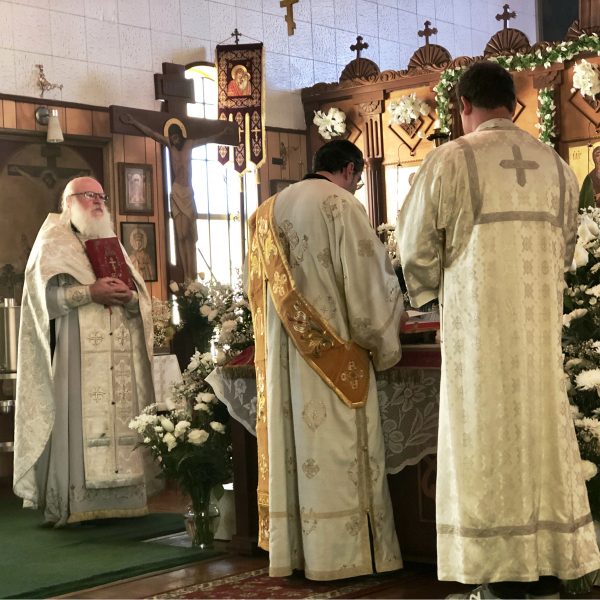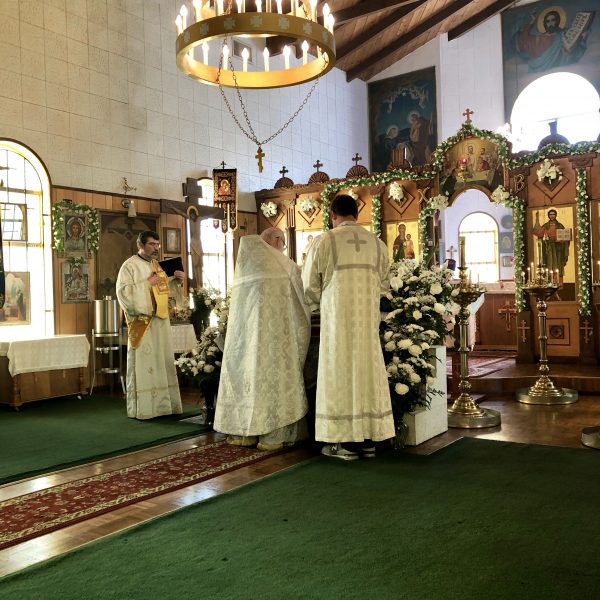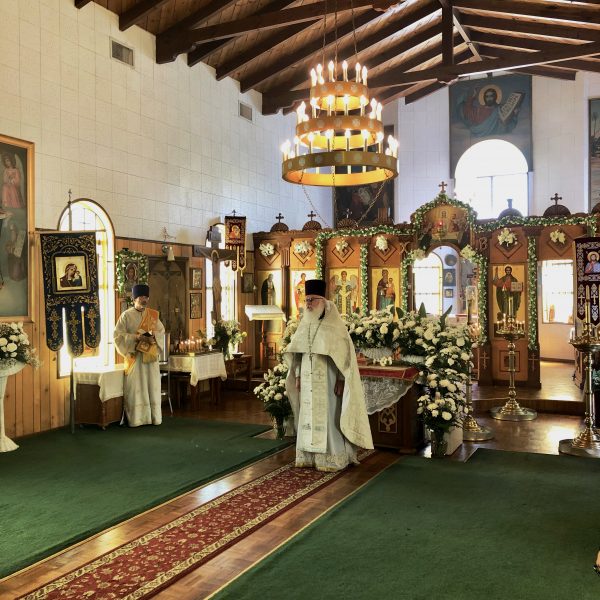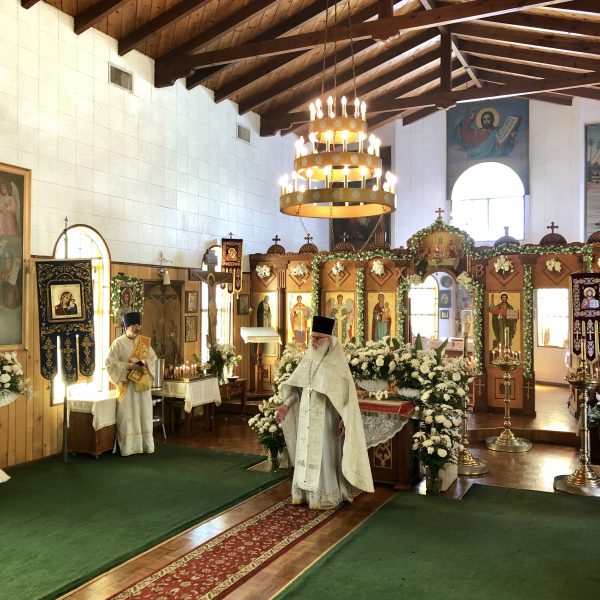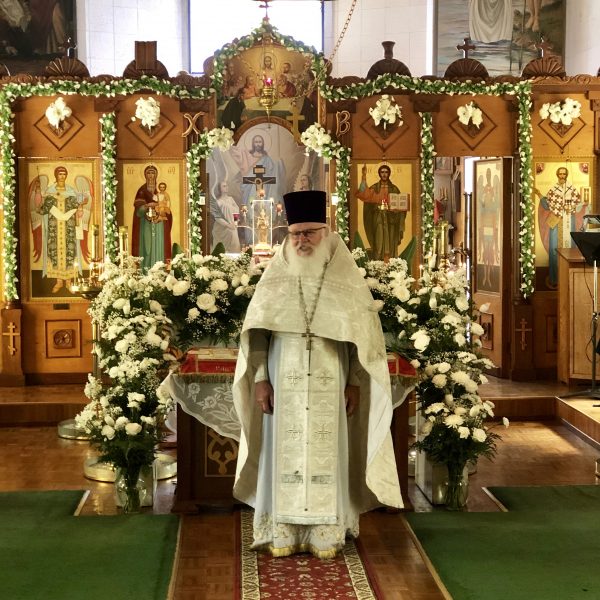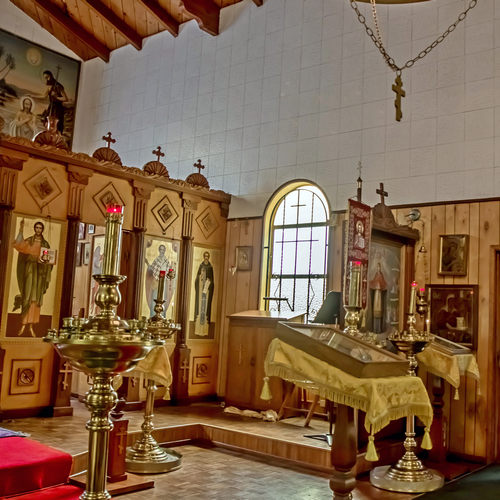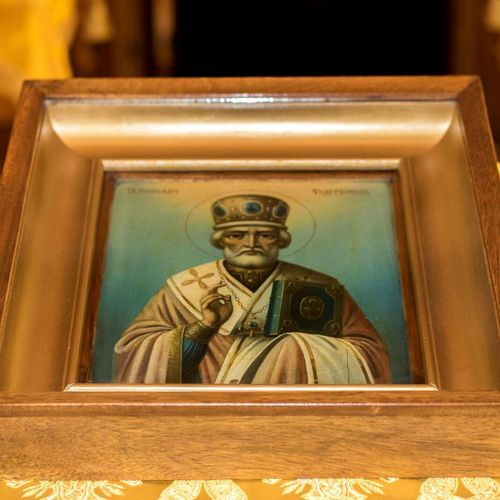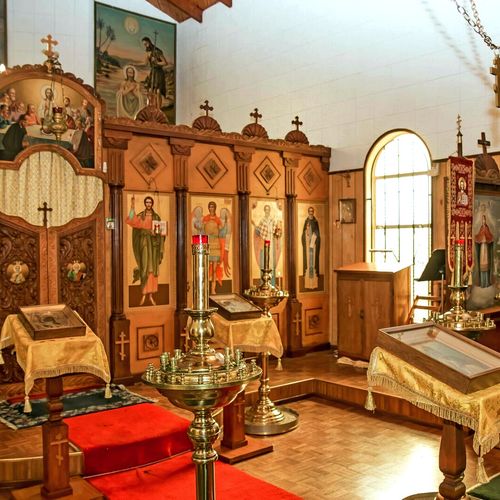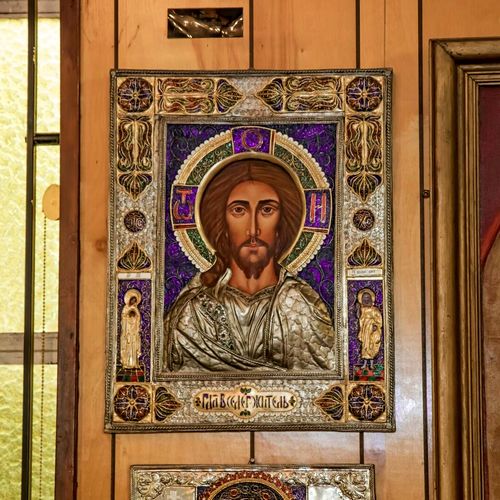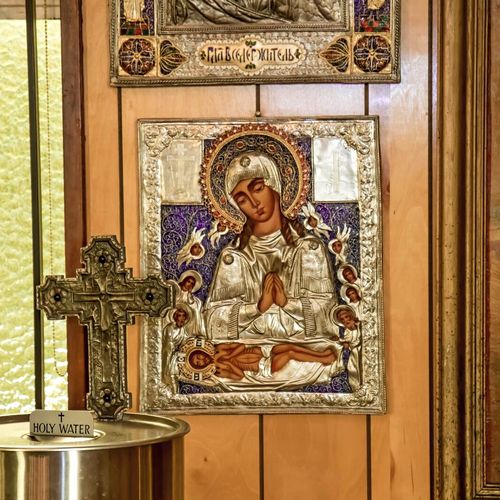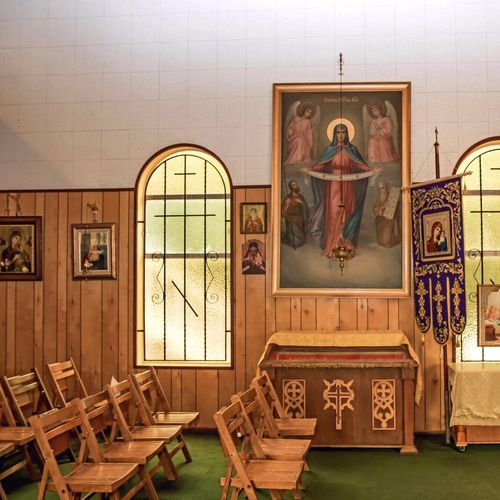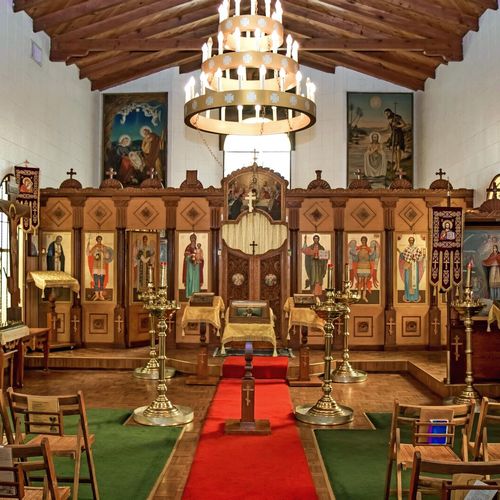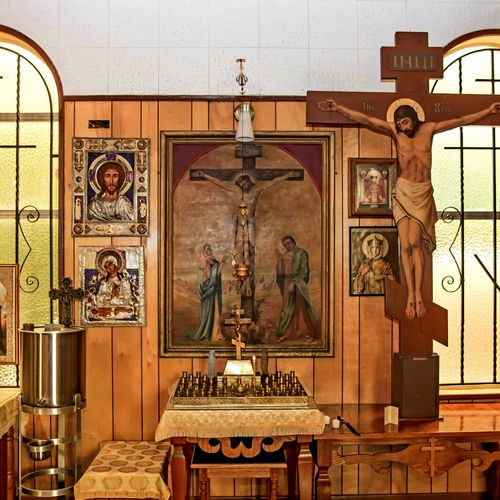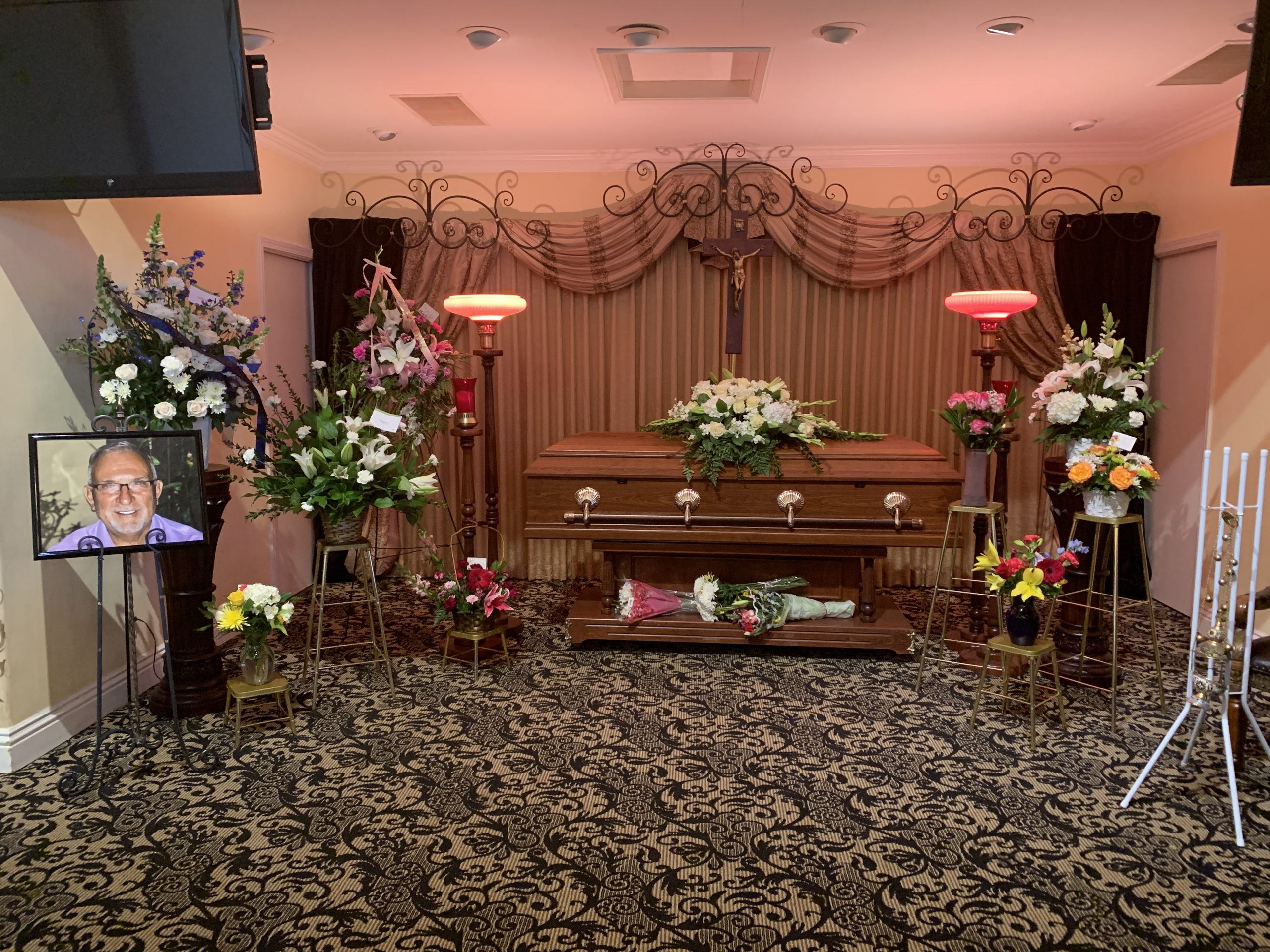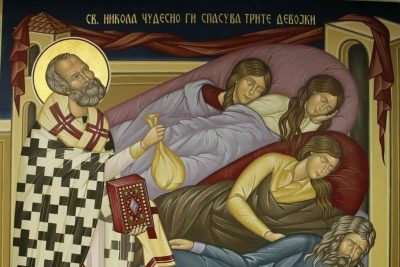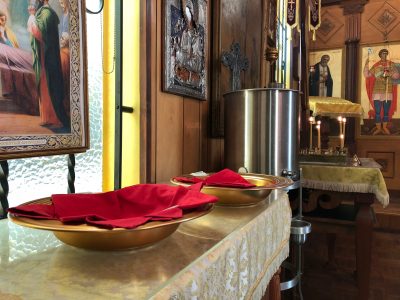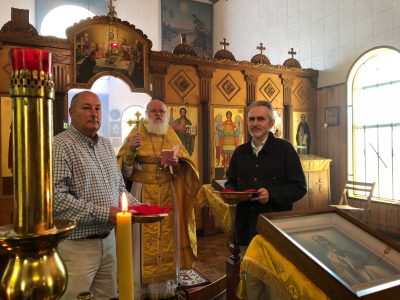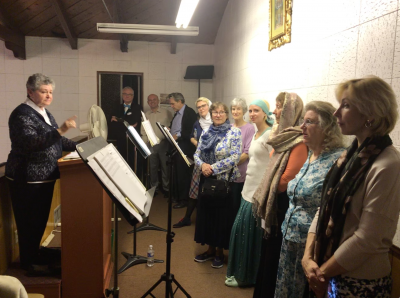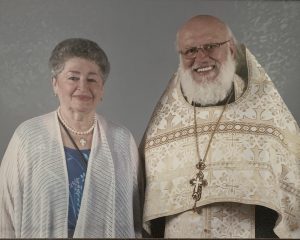

Beloved St Nicholas Church Parishioners,
Дорогие братья и сестры!
После длительного перерыва, связанного с Пандемией Коронавируса, наша церковь, с Божьей помощью, получила разрешение на возобновление Богослужений!:
Вечернее богослужение по субботам в 6 ч.
Божественные Литургии по воскресеньям в 10 ч. утра.
Asking God’s protection for you all,
Father Alexander Shkalov and the Church Council St. Nicholas Russian Orthodox Church of San Diego
History of St. Nicholas Church
Boris Levenetz, April 2004
In the 1940’s, a group of Russian women, who had previously met and married Navy servicemen in China, along with other local people of Russian background who lived in the San Diego area, decided that they needed to have a Russian Orthodox Church in San Diego.
Metropolitan Theophilus of the “Greek-Catholic-Russian-Orthodox-Church” (also called the Metropolia) sent V. Rev. Makary Baranoff, who was from Alaska, to organize a Russian Orthodox parish in San Diego. As a result of his efforts, the first Divine Liturgy was celebrated at St. Paul Episcopal Church, with 30-40 people in attendance. On December 14, 1940, the parishioners decided to dedicate their church to Saint Nicholas of Myra, a well-loved and popular saint in Russia.

Beloved Brothers & Sisters,
Welcome to Saint Nicholas Orthodox Church. Thank you for visiting our site.
We greet you with the affection of Christ. Our church is an Orthodox, Christian church: the ancient, historic, and original church of the New Testament, which has neither added to, nor taken away from the faith experience of the apostles who witnessed the life, death, and resurrection of Jesus of Nazareth.
We are a parish of the Orthodox Church in America, and under the guidance of the Diocese of the West and The Archbishop of San Francisco and the West Benjamin. Our parish demographics include Americans, Russians, Ukrainians, Belarusians, Greeks, Armenians, Georgians and many other ethnic identities. Our services are conducted in both English and Church Slavonic.
Throughout the year we host several events, many of which include traditional Russian music, food, and entertainment. Each Sunday after Divine Liturgy, we come together in fellowship in our social hall for light refreshments. Come among us in peace for prayer and divine worship. You are among friends here who, with you, seek church as a second home.

Schedule of Services:
Sunday
10 am Divine Liturgy
Every 1st and 3d Saturday of each month
6 pm Vespers
Расписание богослужений:
Bоскресенье
10:00 утра Божественная литургия
Каждая первая и третья Cуббота месяца
6:00 вечера Великая вечерня
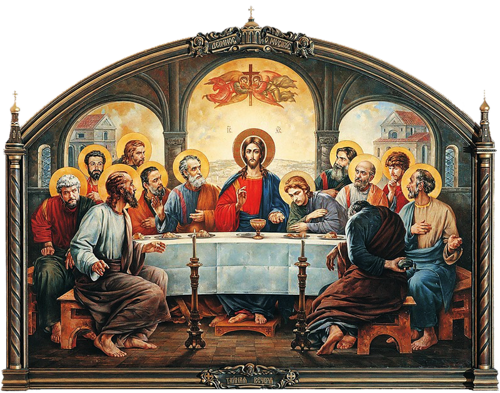
Holy Week Schedule:
19-April-2025 Saturday:
- 10:00 am – Divine Liturgy
- 9:30 pm – Blessings of Kulich & Baskets
- 10:30pm – Blessings of Kulich & Baskets
- 11:30 pm – Pasha of Christ
20-April-2025 Sunday:
- 12:00 pm – Paschal Vespers and Blessings of Kulich & Baskets
Страстная седмица:
19-04-2025:
- 10 утра – Литургия
- 9:30 — Освящение куличей
- 10:30 вечера — Освящение куличей
- 11:30 вечера Xristos Bockrece!
20-04-2025:
- 12 утра -Вечерня и Освящение куличей
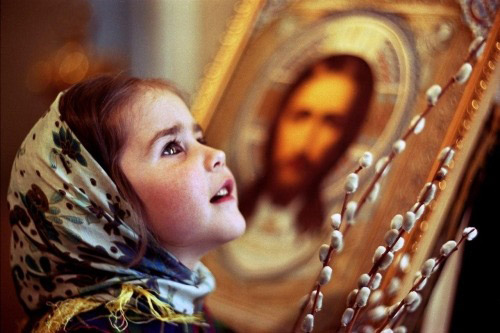

Photo Gallery
The Russian Orthodox St Nicholas Church in San Diego invites you to our services held every Saturday and Sunday…Spoken in both Russian and English languages. Also join us for Russian events which include traditional Russian music and foods.

Blog
Prayer Upon Entering the Church
“I will come into Your House in the multitude of Your mercy; and in Your fear I will worship Your Holy Temple. Lead me, O Lord, in Your righteousness because of mine enemies; make your way straight before me, that with a clear mind I may glorify You forever, One Divine Power worshiped in three Persons: Father, Son, and Holy Spirit. Amen.”

Donating to St. Nicholas
Dear Parishioners,
Our church cannot exist without your support. Even if you are not currently able to support the church financially, please prayerfully consider sharing your time, talents, and knowledge in serving.
OPPORTUNITIES:
Carpenter
Gardener/Landscaper
Cleaner for the church and social hall
Plumber
General Maintenance
Website Support
Painter
Choir Member
Photographer
If you can assist with any of these tasks, please contact Fr. Alexander or email us through the website.
ДОРОГИЕ ПРИХОЖАНЕ,
Наша церковь не может существовать без ваших пожертвований. Если вы в настоящее время не в состоянии поддерживать церковь материально, просим внести свой труд, время и знания.
ПРИГЛАШАЮТСЯ:
Плотник
Садовник
Уборщик
Сантехник
Мастер по ремонту компьютора
Вебмастер
Маляр
Корреспондент
- Фотограф
C предложением обращаться к настоятелю о. Александру.

Church Etiquette
The holy temple (church) is the house of God. If we believe in God, we show Him respect. We show respect also to our brothers and sisters in Christ. In this way, we follow the advice of Saint Paul: “Let all things be done decently and in order” (1 Corinthians 14:40).
Our behavior in church is an important part of our Orthodox faith. It is prayer in action. When we behave badly, we bring shame upon our holy faith. When we behave properly, we inspire others to pray and set a good example for our children. Out of respect for our Lord and Saviour Jesus Christ, His Mother, and His Holy Church, for those who worship here, for the Holy Tradition and ancient customs of the Orthodox Christian Faith, and for one’s own self-respect, suitable and modest attire, comportment and behavior are earnestly requested of all guests and members.
When we enter the Holy Temple. . .
a. We arrive prior to start of services.
b. We clean off our shoes outside or in the entry hall.
c. We do not bring food into inside the church or chew gum in church at any time. We do not smoke anywhere inside the church (or social hall) nor do we smoke on the steps or directly in front of the church. We turn off our cell phones.
d. We enter reverently. If we must speak, we whisper or speak softly.
e. We face the holy altar, cross ourselves three times with three bows, and silently say: “O God, be merciful to me a sinner” (Luke 18:13).
f. We venerate the icon in the center of the church, then any other icons.
When we venerate Holy Icons. . .
a. We make a metania or poklon: We cross ourselves, then bow at the waist, reverently.
b. We make a second metania.
c. We kiss the icon or other holy object (e.g., the Gospel Book):, the foot of our Lord Jesus Christ, the hand of the Most Holy Theotokos or saint, the hair (if only the face is depicted), the foot or bottom cross-bar of the crucifix. If women must wear lipstick to services, they blot their lips before kissing a holy icon or relic.
d. We make a third metania.

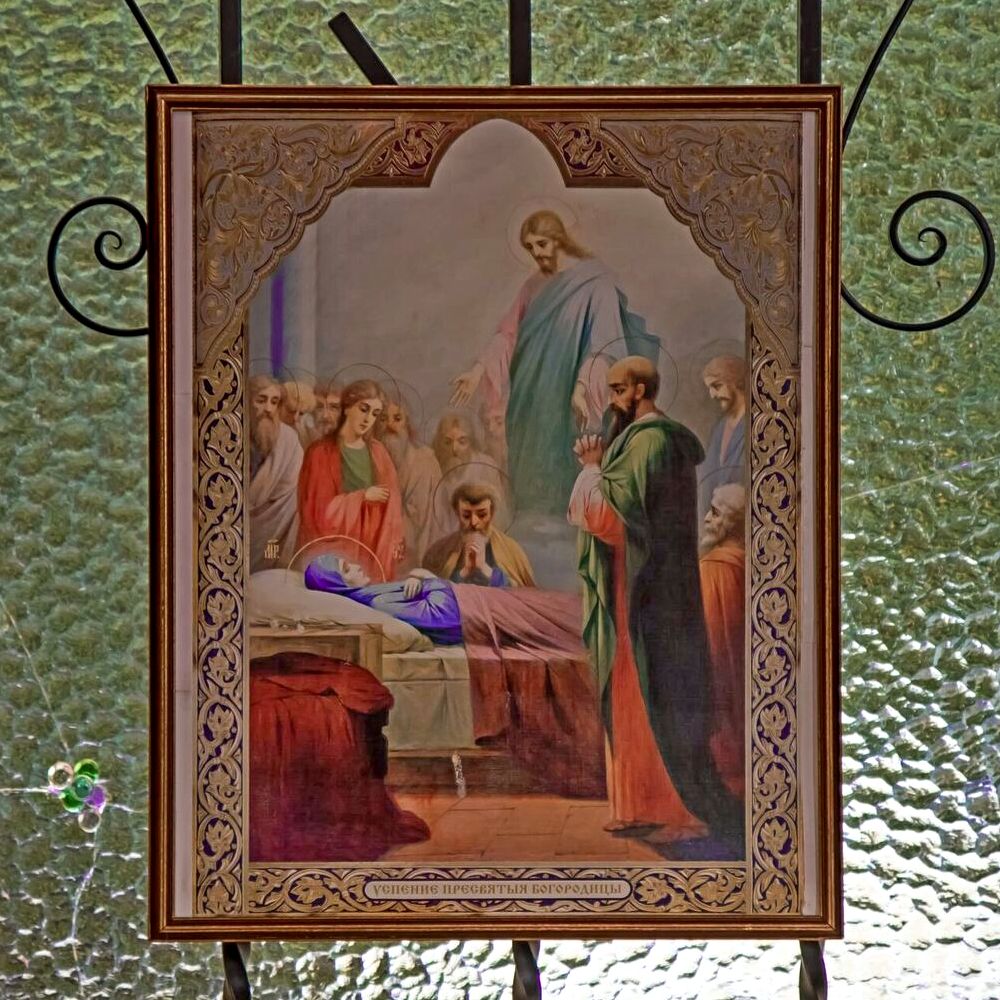
When we Worship in Church . . .
a. If we can, we Stand at services. If not, we sit quietly.
b. We try not to laugh, chatter, stare, or otherwise distract others. Our of respect for our Spiritual Father, we do not wander around during the services nor do our children because we understand this is a distraction to others who are praying and participating in the service.
c. No one may enter the Holy Altar (behind the icon screen) unless he is called to serve. If he wishes to send a message to the priest, he stands at a side door and speaks to an altar server.
d. Whenever we pass in front of the Royal Doors in the center of the icon screen, we make a metania (cross ourselves and bow).
e. When the Holy Doors to the Altar are open, we stand up, face the Altar, hands at our sides or held one over the other at the waist. We do not stand or sit with hands in pockets, do not fold arms behind us or across or our chest. If we must sit down, we do not cross our legs. When the Chalice is brought out for Communion, we remain standing and remember, the Body and Blood of Christ is for only those who have received confession and prepared by prayer and fasting, and arriving to the service on time.
We do not light candles or enter the nave (church proper area):
– While the priest is carrying the Gospel Book or the chalice
– While the Epistle or Gospel is being read
– While the faithful are in line for Holy Communion
When we approach the chalice to receive the Body and Blood of Christ, we cross our arms (right over left) and tell our name to the priest. After Holy Communion, we wipe our lips with the cloth and kiss the chalice, then step aside to take the zapivka, the cup of wine and piece of bread on the side tables.
We remain inside the church after communion because we know the service is not over until Father blesses us to leave. If we have received communion, we remain inside and participate in the Prayers of Thanksgiving.
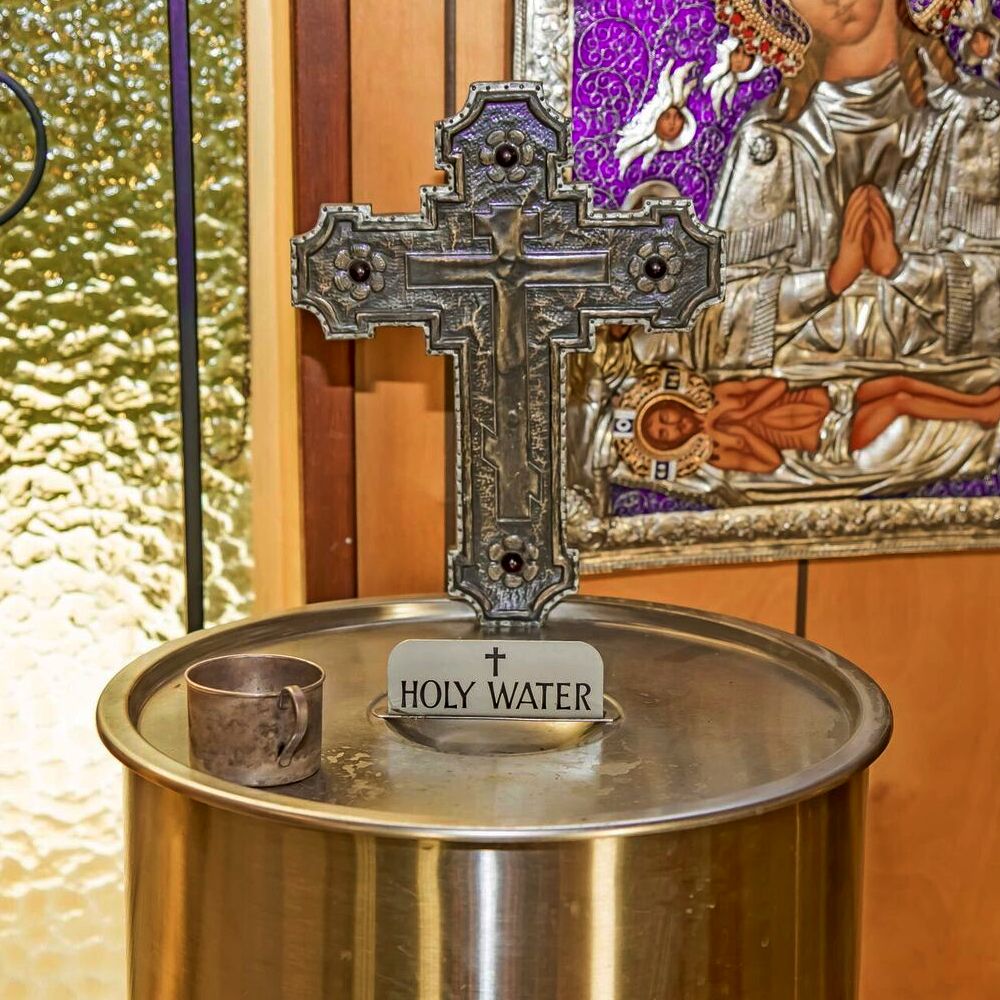
Sunday Dress
by Fr. David Barr
by Fr. David Barr
Remember the time when people put on their “Sunday best” to go to church? In fact, dress clothes were ofter referred to as Sunday clothes. In some parts of the country, this is not common today. In fact, all too often, dress in church has become too casual. In all areas of our lives we should offer Christ our best And the same is true of your dress. We should offer Christ our “Sunday best”, not our everyday or common wear. We should dress modestly, not in a flashy way that would bring attention to ourselves. Our dress should be always be becoming of a Christian – especially at church.
Here are some specific guidelines we use in our parishes:
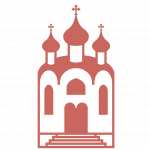
ЦЕРКОВНЫЕ ТРЕБЫ
(cовершаются по предварительной договоренности со священником)
*богослужения, совершаемые не ежедневно (т.е. не входящие в суточный богослужебный круг), а по их необходимости (по требованию). Требы делятся на содержащие совершения таинств – крещение, миропомазание, венчание, исповедь, елеосвящение; и не содержащие – отпевание, панихида, различные молебны и т.п.
МОЛЕБНЫ
Молебен – богослужение, содержание которого составляет сугубое моление ко Господу Богу, Пресвятой Богородице или святым. По своему составу молебен представляет собой сокращенную утреню. Основными частями молебна являются: тропари, канон, Евангелие, ектения, молитва. Молебны бывают благодарственные и просительные. Последние совершаются по поводу событий и нужд общественно-церковной или частной жизни (путешествие, начало какого-либо дела, о здравии и проч.).

СОРОКОУСТ
Сорокоуст– ежедневное молитвенное поминание о Здравии или Упокоении в течение сорока дней.
Сорокоуст “О здравии”, заказывают не только за здоровье наших близких, особенно о тяжелобольных, но и за их успехи, материальное благополучие, душевный покой.
Сорокоуст “О поминовении усопших” заказывают после смерти или отпевания, или в любое желаемое время.

КРЕЩЕНИЕ, ВЕНЧАНИЕ, ОСВЯЩЕНИЕ
(Домов, компаний, автомобилей и пр), СОБОРОВАНИЕ (Елеосвящениe)
Соборование– это церковное Таинство, в котором при помазании тела специально освященным маслом (елеем) призывается на человека благодать Божия, исцеляющая немощи душевные и телесные. Кроме телесного исцеления, в Таинстве испрашивается и отпущение грехов — ибо большинство болезней являются следствием греха, тогда как сам грех — болезнь духовная.

“St. Nicholas Russian Orthodox Church is filled with peace and love. Batushka (Father) Alexander, Protodeacon George, and Matushaka (Mother) Riasa, Holy George Krupenkin, Matthew, Olga, and many others have welcomed us with compassion and love. The Orthodox Christian services are in Russian and English; the Choir sings beautifully.”
“Wonderfull small church. Kind people, very quiet and nice.”

